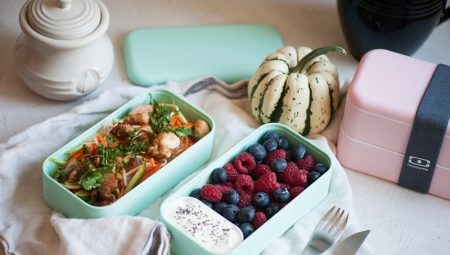Lunch box is an indispensable item for anyone who prefers fast and tasty food, which does not need to be long in shops and catering. High-quality lunch boxes can not only protect the freshness of food, but also keep it warm for a long time. Consider the information about lunch boxes: common varieties, as well as the pros and cons of their use.
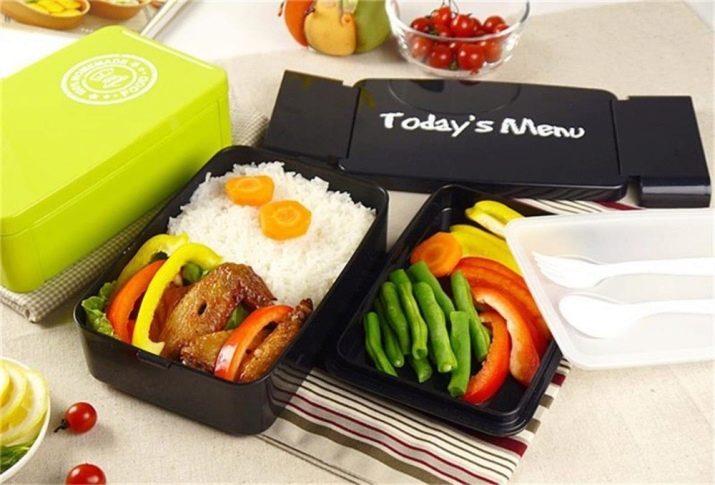
What it is?
Lunch boxes are containers of a separate or folding type for long-term storage of food and preservation of its taste, vitamin and cooking temperature. Quality lunchbox models can serve not only for storing second courses and snacks, but also able to keep soups, salads and fruits fresh for a long time.
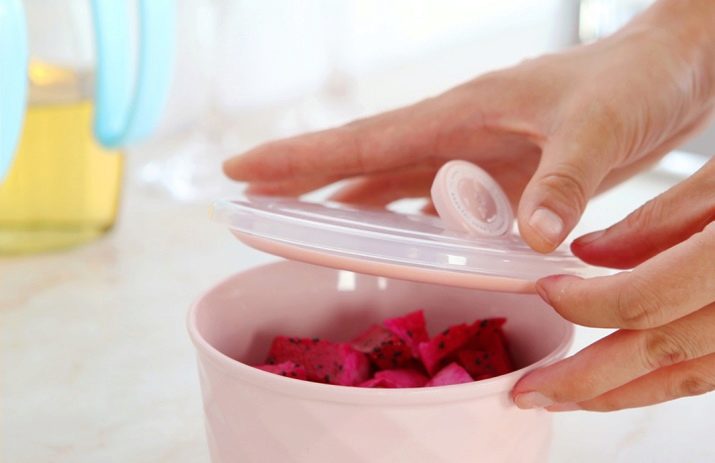
Advantages and disadvantages
All lunch-box models differ in both individual and general positive and negative qualities. Initially, it is worth paying attention to the pros.
- Saving. Self-prepared natural food, which you put in a container for further consumption, is much cheaper than products and goods bought in stalls and catering. In addition, the modern food market offers us a huge selection of budget and high-quality containers that perfectly preserve food.
- Quality. You can be 100% sure which foods you eat when it comes to natural lunch box food. Meanwhile, you will never be sure of the quality of the products that were used to prepare dishes from dining rooms or shops.
- Time. One of the main advantages of food in containers is that you can start eating at any time convenient for you, without disturbing the diet and without experiencing increasing hunger. In addition, in order to have breakfast with containers, you do not need to spend time in lines of dining rooms and shops.
- Design. Today, there are a huge number of lunch boxes in a wide variety of colors and designs.
Beautiful, new and high-quality containers not only preserve food, but also cheer you up for a whole working day ahead.
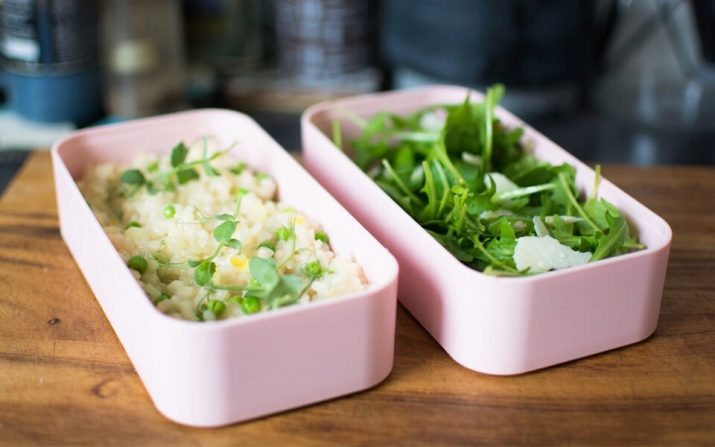
In addition to the obvious pluses, containers have their drawbacks.
- Space. Even high-quality lunch boxes occupy a large amount of space in backpacks and bags. This is especially true for models with several sections.
- Smell. In low-quality models of containers, and today they are the majority, food can acquire an unpleasant aroma, which can ruin the whole appetite. Moreover, when eating such food in a public place, this smell can attract other people's attention. Containers with poorly closed or leaky lids can not only spoil the smell of your things and bags, but also stain them.
- A mixture of aromas. The main problem of multi-section lunch boxes is that the smells of food placed in different departments merge into one continuous aroma over time. This aroma will not seem pleasant to everyone and may well spoil the pleasure of food.
- Warming up. Unfortunately, not all models of modern lunch boxes can be heated in microwaves, and not every workplace can be found working microwave. While the food in the canteens and shops will be fresh and, if desired, warmed up.
- Time. If in the case of containers you do not spend time queuing in the cafeterias, then spend it on regular cooking. To do this, you have to get up earlier every day for half an hour or more to cook food and place it in a container.
Kinds
Depending on the use and size of the containers, there are several common varieties of lunch boxes.
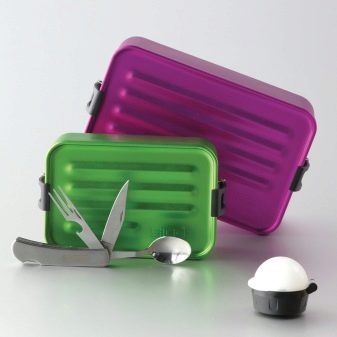
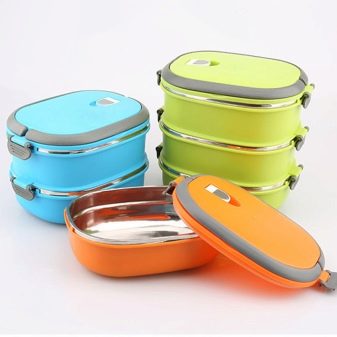
Lunch boxes for children with heating
Parents usually buy such lunch box options for their children who go to schools or mugs, because for high-quality education, you just need complete, healthy and timely nutrition. Besides that these containers keep food tasty and healthy for a long time, they are able to maintain a comfortable temperature level so that it stays warm and warmed for a long time.
These types of lunch boxes usually have tight and completely sealed lids, and are also equipped with a portable handle for a comfortable transfer of food in the hands. And also in such models usually several departments are provided at once: for hot dishes, salads, fruits, flour. One of the disadvantages of such models is their relatively high cost and reduced volumes in contrast to lunch boxes for adults.

Bunk Food Chests
These lunchbox models are represented by two or three small tiers for individual types of food. They are called trunks because such containers are placed in special fabric bags in the form of oval trunks with a handle. A distinctive feature of such lunch boxes is that in appearance, you cannot say that food is stored inside.

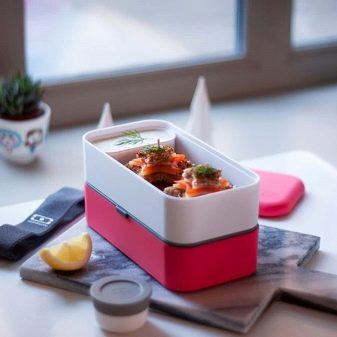
Usually this option of lunch boxes is used by athletes or outdoor picnic enthusiasts.
These lunch boxes have such advantages as:
- they can carry 2 separate full dishes at once;
- thanks to the strong handle and stylish appearance, these containers can be carried without hesitation in any public place and at work;
- a set of such containers usually contains a set of tableware: forks, spoons and knives that facilitate the consumption of food.
Heated Sandwich Containers
Especially popular in recent years are containers designed exclusively for snacks and quick meals. Such lunch boxes are used as carry-overs for flour and sandwiches. Usually they look like large pencil cases with a special internal isothermal coating, which allows bread and meat products not to air and keep fresh for several hours.
Typically, such "pencil cases" are equipped with a special strap, which simplifies their transfer from place to place. And also there is an internal strap that fixes the sandwich in a given position and prevents it from breaking and crumbling.
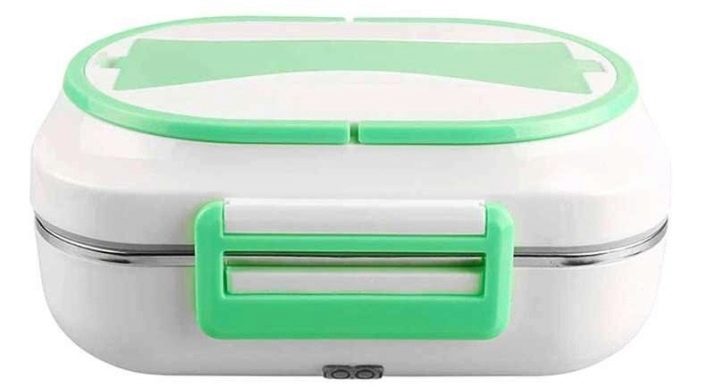
Most often, these options are bought for children and students who have too busy schedules for going to the canteens.
This lunchbox option has the following advantages:
- a wide selection of product designs;
- great choice;
- compact and small size for carrying.
Lunch boxes in the form of thermal packs
They are the most budget and compact option among all lunch boxes. Typically, such bags are standard bags lined with material inside, designed to reflect and retain heat. In such bags, the products remain warm for up to several hours, the tightness is ensured by fasteners or special Velcro. Most often this option of lunch boxes is used. for storage of fruits, vegetables or serves as an additional heat insulator for other containers.
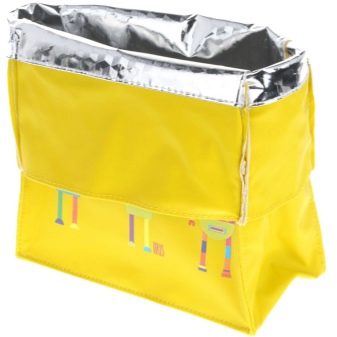
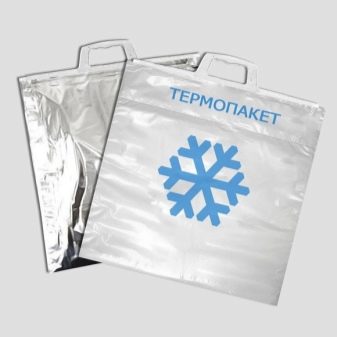
Disposable Lunch Boxes
For such lunchbox options, expanded polystyrene is used, which is able to retain heat for a rather long time and not spoil the taste and quality of food. The downside of such containers is their low strength, lack of protection from heat treatment and the inability to long-term storage at low temperatures. Such containers have no more than 3 divisions for food.
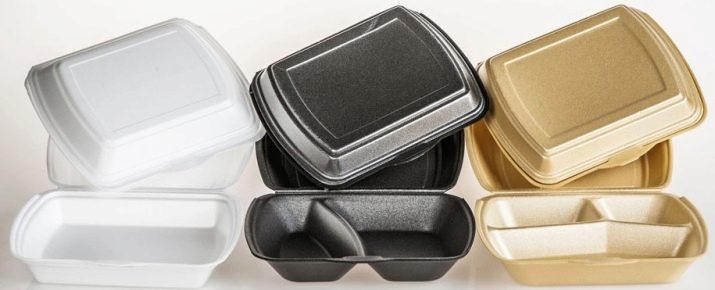
Shapes and sizes
It is worth saying that there is no official classification of lunch boxes depending on their size and shape. It means that the manufacturer independently chooses what dimensions and with how many compartments he needs to create models. So, on the modern market you can find both lunch boxes with a capacity of 500 ml, and with a volume of 2 or more liters.
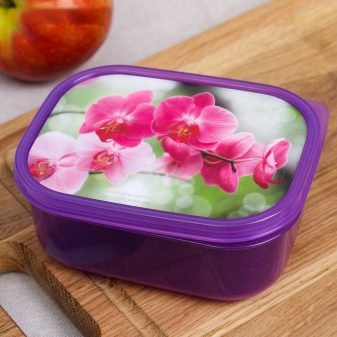
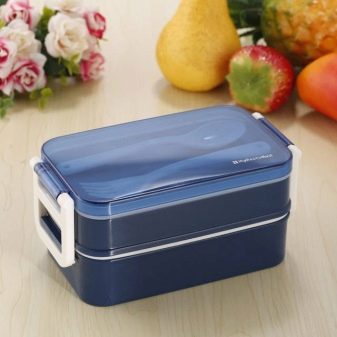
Depending on the number of tiers and levels, lunch boxes are divided into the following types:
- single-level;
- two-level;
- three-level.
Depending on the number of compartments and sections, the containers are divided into: single-section, 2-section and 3-section. And also models with more than 4 compartments for appetizers, salads, sauces or pastes are possible. The choice of large or small containers depends only on the amount of food that you are going to take with you on a trip or to work.
The best and most popular option is lunch boxes with a capacity of not more than 1.5 liters and 2-3 sections.
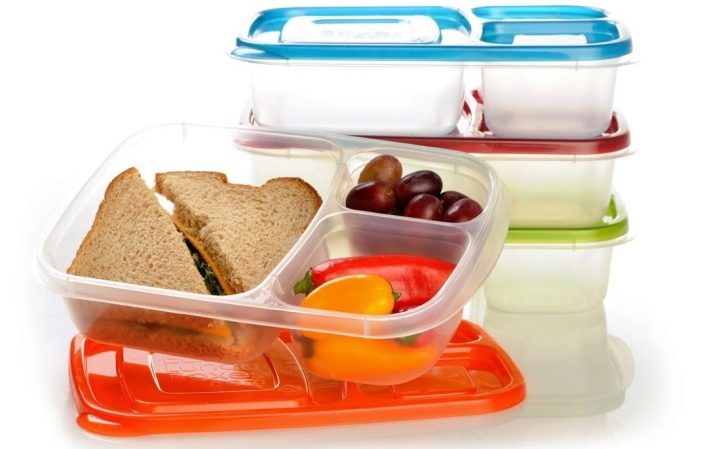
Materials
Modern lunch boxes can be represented by a variety of materials that are more or less more suitable for storing certain foods.
Metal
Metal containers have their advantages and disadvantages. For example, they are more durable than most other containers, retain heat for a long time, do not deform from temperature and keep food tasty in the refrigerator for a long time.
However, metal containers are heavier, more expensive and require special care in order not to provoke oxidation of food.
The biggest advantage of metal lunch boxes is that they can possess several internal layers at once. This approach allows us to achieve the most expensive metal models for storing food for 4–6 hours (as in the case of other lunch boxes), but for several days. Ideal option would be models made of high-quality stainless steel.
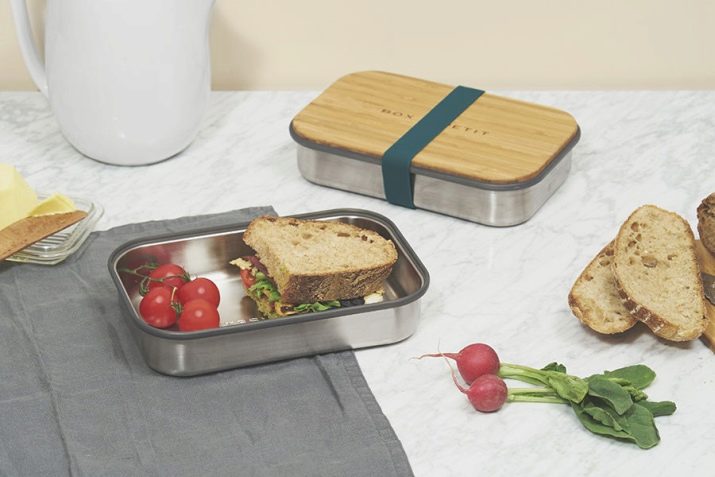
Plastic
Today, plastic is the most common option for making food containers.As a rule, plastic models are completely tight, inexpensive and do not need any special care. When choosing plastic containers, pay attention to the packaging elements.
If the package indicates that the product does not contain bisphenol-A, be sure that such a lunch box will not harm your health. This element is extremely harmful to the human body.
Such containers have such advantages as:
- low cost when compared with metal and ceramic products;
- the possibility of dividing food into several sections, as well as the ability to fully preserve the taste and quality of food; It is from plastic that the most dimensional models of lunch-boxes with many sections and tiers are made;
- plastic containers can be found in every hardware store;
- due to the versatility of using plastic in industry, such lunch-box models can have all the necessary set of containers and tools for a full lunch;
- Plastic containers are usually airtight, which prevents the mixing of different types of food.
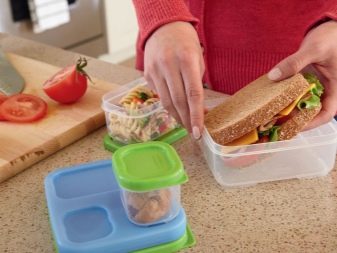
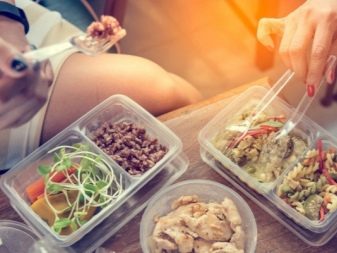
Among the minuses are the following:
- plastic without additional heating elements gives off heat very quickly and is not able to hold it for a long time inside the tank;
- plastic models due to constant contact with moisture and fat deteriorate very quickly, lose their appearance and break;
- not all plastic container models are suitable for microwave heating.
Glass
A variant of containers of this material is found in hardware stores much less often than other varieties. Meanwhile, glass lunch boxes have both positive and negative qualities.
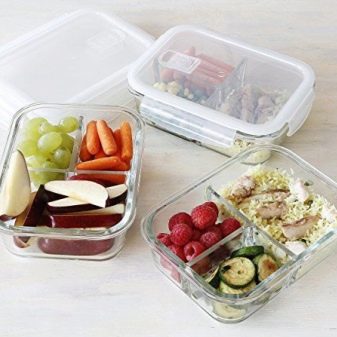
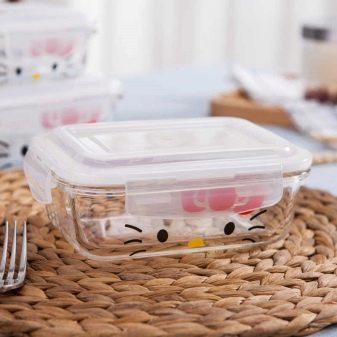
Among the advantages, it is worth noting the following:
- transparent glass containers allow you to monitor the state of food without violating the tightness of the container, which potentially increases the shelf life of food;
- glassware belongs to the "eco" type - it does not emit harmful elements and does not become a hotbed of the spread of bacteria on the dishes;
- almost all modern glass lunch boxes are adapted for heating in the microwave, which makes them competitive with plastic, silicone and polystyrene models.

By cons include the following:
- glassware is much heavier than even metal models of lunch boxes, which makes it a losing option for use on long trips and trips;
- despite the external strength of such utensils, glass is extremely poorly resistant to physical stress and pressure; from falling on a tile or stone, glass containers crack and crumble;
- due to the too high density of the glass, it is impossible to make models with many divisions and tiers from it;
- glass does not respond well to sudden changes in temperature - if you stored food in a glass container in the freezer, you should not immediately lower it under warm water, since the lunch box is likely to crack;
- glass containers cannot be stored in an open place - they do not prevent sunlight from entering food, which can damage it.
Ceramics
Ceramic containers are also not popular among other models.
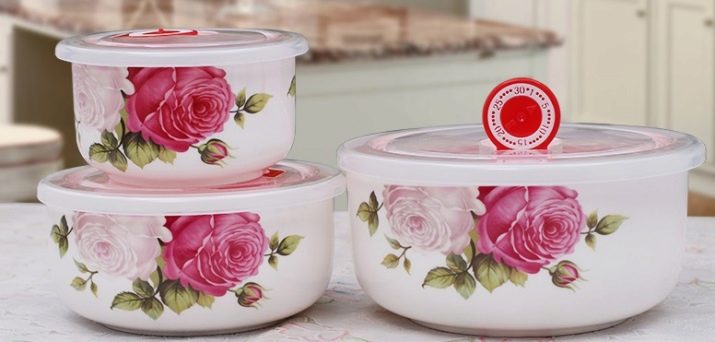
It should be noted that in order to better retain heat, ceramic containers are sometimes wrapped in a special thermal fabric. This allows you to increase the shelf life of food at a comfortable temperature for consumption.
Pros are as follows:
- the possibility of prolonged heat conservation due to the structure of ceramics
- relatively high density when compared with plastic and silicone models;
- does not affect the taste and quality of food, does not mix smells, and is also considered an environmentally friendly option;
- if in glass models there is a minimal possibility of creating lunch boxes with several sections, then ceramic models most often come with only one qualitative division.

Among the minuses are the following:
- the same weight as glass - this makes it a poor option for use on long trips;
- high-quality ceramic lunch boxes are much more expensive than plastic, silicone and even glass models, but cheaper than stainless steel models;
- the strength of ceramics is as fragile as glass - from the slightest drop, such containers may break or crack, thereby breaking all tightness and thermal insulation.
Silicone
Some attribute containers of this material to the “eco” type - bacteria do not breed in them, there is always a pleasant smell. Silicone caps ensure complete tightness of the container, tightly fitting to the container, which prevents spills of mixtures and liquids. In addition, silicone containers are much cheaper than metal and ceramic products.
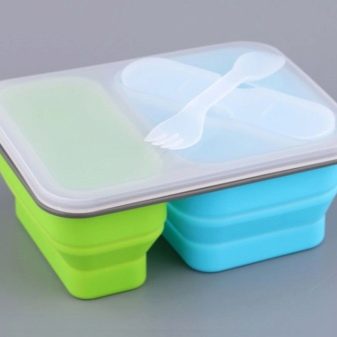
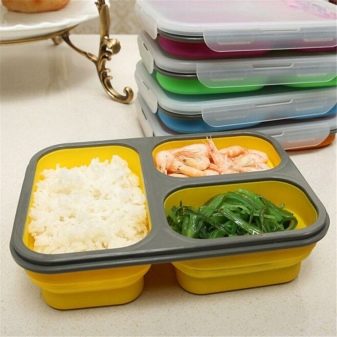
Choice of color and design
Fortunately, the market today offers a huge number of lunch boxes for every taste, as far as the design and design of containers are concerned. The most diverse in this regard are models made of stainless steel or ceramics: the outer layer of containers is decorated with paintings and drawings of different colors. If we are talking about options made of plastic, silicone or polystyrene, then here most often there are models in a monophonic design.
Most often, bright fresh colors are used to design lunch boxes to emphasize the freshness of food: green, yellow, red, lime, blue. In the case of polystyrene containers, black and white are more common.
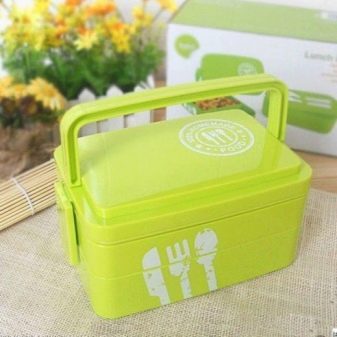
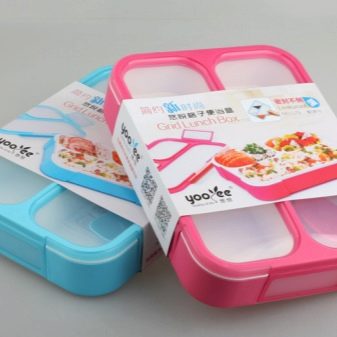
Manufacturers Overview
Among the most famous manufacturers of high-quality containers, there are 5 most common: Tupperware, GoEat, Gipfel, IKEA. It is the manufacturers from this rating that today produce the highest quality lunch boxes with excellent thermoregulation, heating and durability. For example, Tupperware lunch boxes are known for their huge selection of designs, colors and the number of interior sections. These containers are made of several materials at once, which allows you to more finely approach the preservation of food quality.
Lunch boxes of the company Bento differ in exceptional tightness, durability and ease of use at home. As a rule, in these containers there are two whole layers - the inner one is represented by a thick layer of stainless steel, the outer one is made of durable and heat-resistant ABS plastic.
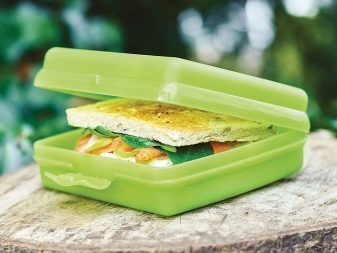
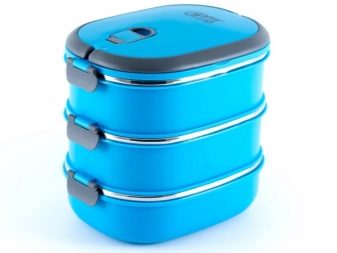
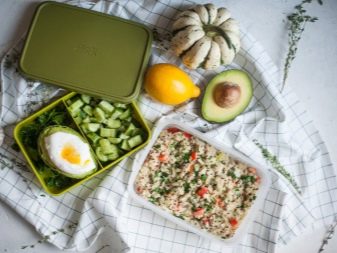
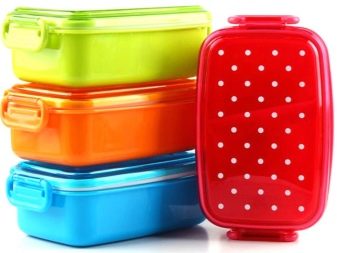
How to choose?
Today, food containers can be found in almost every hardware store, however, unfortunately, not all of the presented models are of high quality and will be able to properly preserve all food. To choose the optimal lunch box model for your needs, you should study its description, characteristics, photos and documents. It is advised to pay attention to several points when choosing containers.
- Type of food. Each of the types of lunch boxes and containers is adapted for a certain type of food. For example, for storing hot liquids, for example, soups, teas or stewed fruit, it is worth choosing thermoses, for storing main dishes and snacks, for example, salads, you should choose classic containers. To store whole fruits and vegetables, you should choose models of lunch boxes with an isothermal coating - they will keep them fresh and tasty longer.
- Tightness. The lunch box model, regardless of the variety, must be airtight - that is, have a tight and well-closed lid. Ideal options would be models with a cover that can be locked using additional plastic locks or fasteners.
- Warm up. On modern models of lunch boxes, it is usually indicated in what temperature conditions they can be used. If this information was not found by you, do not hesitate to contact a consultant and clarify this point.In addition, today there are models of lunch boxes with heating or with a thermobag like a thermos, food from which you do not need to reheat so often.
- Care. Modern lunch boxes, and especially multi-section models, often have an inconvenient design for maintenance and washing. If you have a dishwasher at home, you should check with your consultant to see if the model can be washed in it.
- Separators. If you spend a lot of time at work and are used to several meals during work, you should choose container models with several sections for different products.
- Accessories Some expensive lunch-box models have additional elements that provide convenience when eating. These can be spoons, forks, insertion containers, mini-trays, folding glasses.
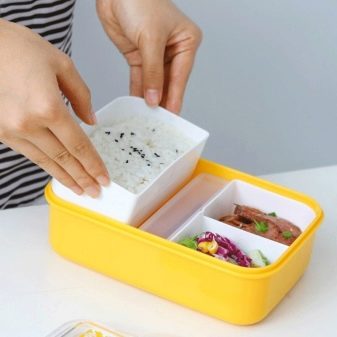
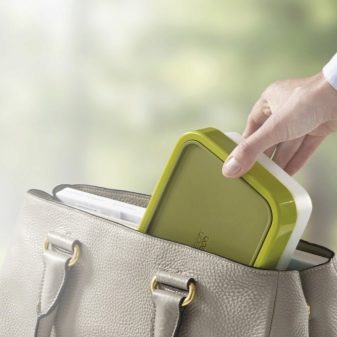
Care Features
Fortunately, any lunch-boxes prepared using modern technologies do not need any specific care. When it comes to container care, you should pay attention, first of all, to the optimal storage conditions of the material of manufacture. So, the main rules for caring for all lunch boxes.
- Regardless of material, always keep containers clean. After each meal, wash the container thoroughly, wipe with a cloth, or leave it to dry in a warm place. Do not forget that containers should be wiped from the outside and the inside.
- Try to avoid excessive exposure to high or low temperatures on the lunch box. Many of the materials described above can be deformed by prolonged exposure to cold or heat. In addition, some of the materials of which modern food containers are made can release hazardous and unhealthy substances into food during heat treatment.
See how to choose the right lunch box for food.
